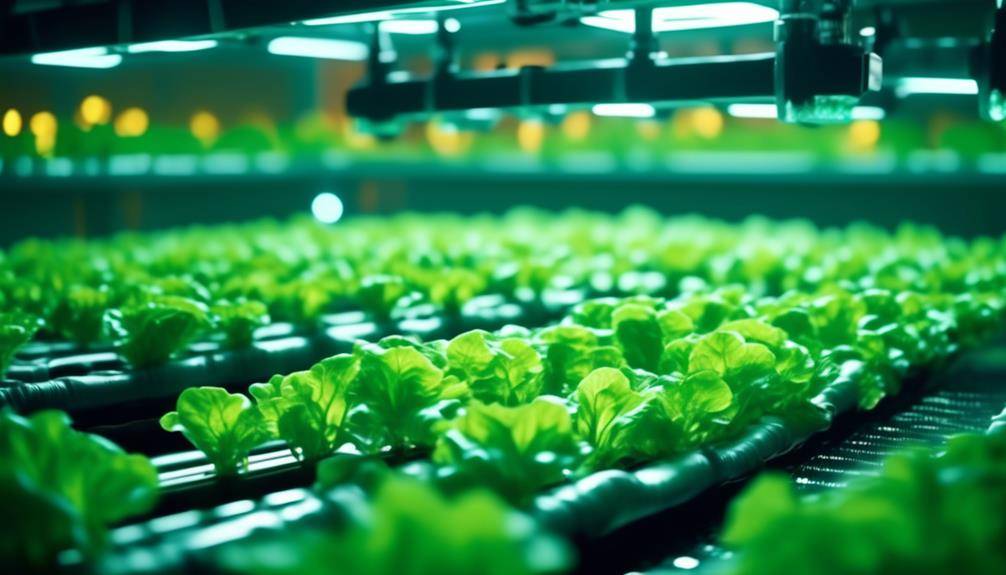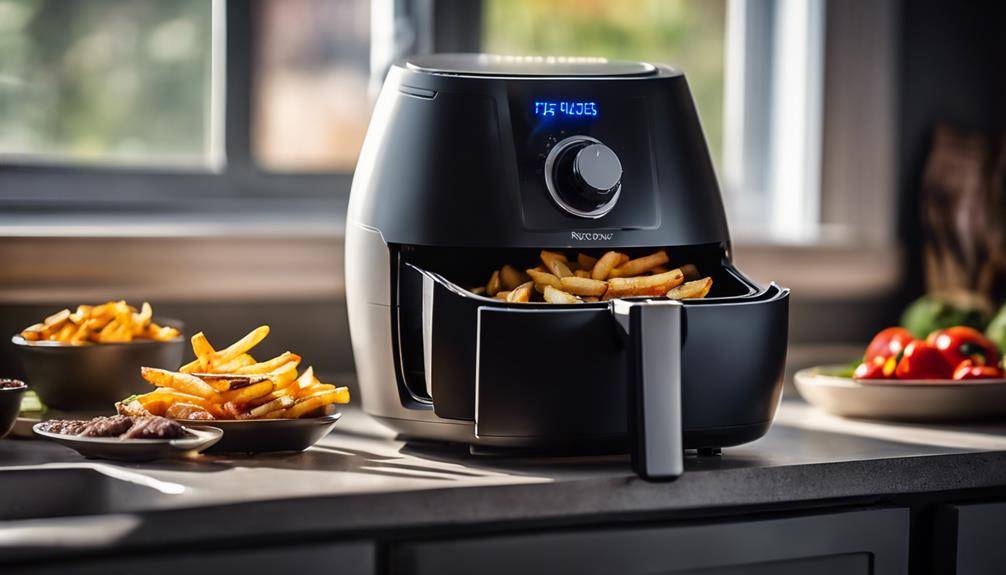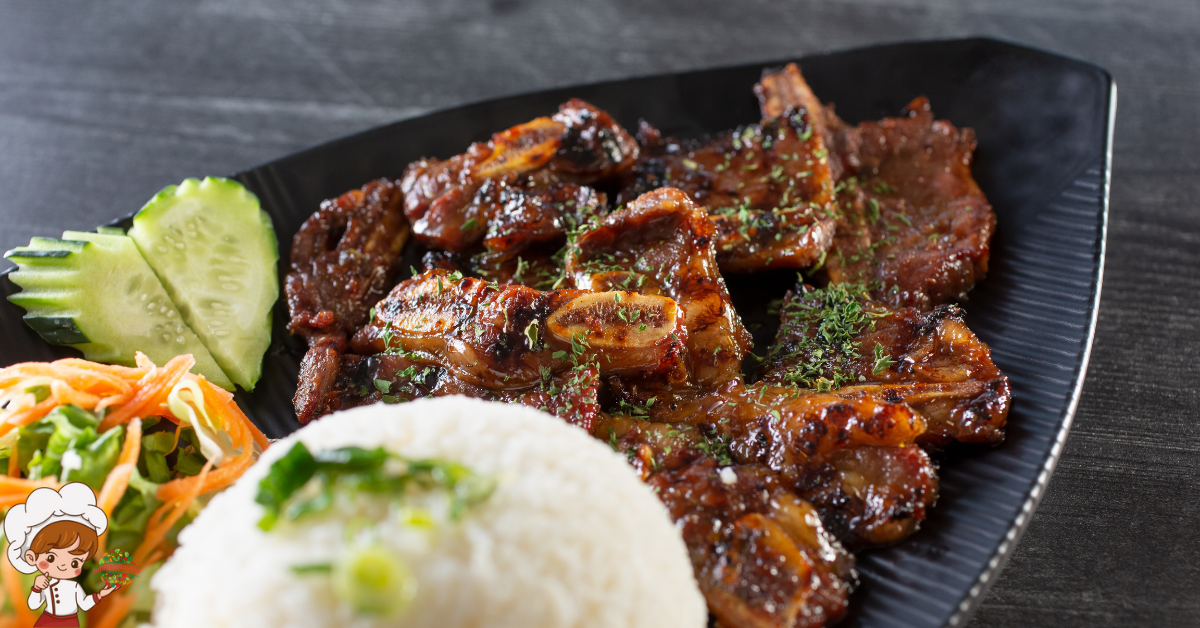Emerging Innovative Hydroponics Farming Techniques

Are you tired of the limitations of traditional farming techniques? Well, hold onto your overalls, because Innovative Hydroponics Farming Techniques are here to revolutionize the way we grow our food. With cutting-edge technologies and a focus on sustainability, hydroponics offers a glimpse into the future of agriculture. But what exactly is hydroponics, and how does it work? In this discussion, we will explore the benefits of hydroponics, delve into the different types of hydroponic systems, and even uncover some mind-blowing future innovations that will leave you wondering how we ever managed without them. So, strap in and prepare to have your farming paradigm turned upside down.
Benefits of Hydroponics
In hydroponics, the benefits are plentiful, ranging from increased crop yields to optimal nutrient absorption. One of the major advantages of hydroponics is its ability to facilitate vertical farming. By utilizing vertical space, hydroponics allows for more efficient land use, making it possible to grow a higher volume of crops in a smaller area. This is especially beneficial in urban areas where land availability is limited.
Vertical farming offers several advantages. Firstly, it maximizes productivity by stacking multiple layers of plants, effectively increasing the cultivation area. This not only boosts crop yields but also allows for a more diverse range of plants to be grown simultaneously. Additionally, vertical farming can help reduce transportation costs and carbon emissions, as crops can be grown closer to urban centers, minimizing the need for long-distance transportation.
Aquaponics, a popular branch of hydroponics, further enhances the benefits of this farming technique. Aquaponics combines hydroponics with aquaculture, creating a symbiotic relationship between plants and aquatic animals. The waste produced by the fish is converted into nutrients for the plants, while the plants filter the water, creating a sustainable and efficient system. This method eliminates the need for chemical fertilizers, reduces water usage, and promotes a closed-loop ecosystem.
Nutrient Solutions for Plant Growth
To optimize plant growth in hydroponics, it is crucial to carefully formulate and administer nutrient solutions. Hydroponic nutrient solutions play a vital role in providing plants with the necessary nutrients for optimal growth and development. With proper plant nutrition management, you can ensure that your hydroponic system produces healthy and vigorous plants.
When formulating nutrient solutions for hydroponics, it is important to consider the specific needs of the plants you are growing. Different plants require different nutrient ratios, and it is essential to provide them with the right balance of macronutrients (such as nitrogen, phosphorus, and potassium) and micronutrients (such as iron, zinc, and manganese). These nutrients are typically derived from water-soluble fertilizers that are specifically designed for hydroponic use.
Administering nutrient solutions in a hydroponic system involves ensuring that the solution is properly mixed and delivered to the plants. One common method is to use a nutrient solution reservoir, where the solution is stored and then pumped through a network of tubes to reach the plants’ root systems. It is important to regularly monitor the pH and electrical conductivity (EC) of the nutrient solution to ensure that it remains within the optimal range for plant uptake.
In addition to providing essential nutrients, hydroponic nutrient solutions can also be enhanced with supplements such as vitamins, hormones, and beneficial microbes. These additives can further improve plant growth and help plants better withstand environmental stresses.
Types of Hydroponic Systems
Now let’s explore two common types of hydroponic systems: the Nutrient Film Technique (NFT) and Deep Water Culture (DWC). In NFT, a thin film of nutrient solution continuously flows over the plant roots, providing them with the necessary nutrients. On the other hand, DWC involves suspending the plant roots in a nutrient-rich solution, allowing them to directly absorb the nutrients. Both systems offer efficient and effective ways to grow plants without soil, maximizing nutrient uptake and promoting healthy growth.
Nutrient Film Technique
For effective hydroponic farming, consider implementing the Nutrient Film Technique (NFT), a type of hydroponic system that allows for a continuous flow of nutrient-rich solution over the plant roots. NFT is known for its numerous benefits, including:
- Efficient nutrient delivery: The continuous flow of nutrient solution ensures that plants receive a constant supply of essential nutrients, promoting optimal growth and development.
- Water conservation: NFT systems use minimal water compared to traditional soil-based farming methods, making it an environmentally friendly option.
- Space optimization: NFT systems are designed to maximize vertical space, making them ideal for small or limited areas.
Deep Water Culture
If you’re looking to explore another hydroponic system that complements the efficiency and space optimization of the Nutrient Film Technique, consider Deep Water Culture (DWC). DWC is a popular and effective hydroponic system that involves suspending plant roots in a nutrient-rich solution. One of the main benefits of DWC is its simplicity. The setup involves using a reservoir to hold the nutrient solution, an air pump to provide oxygen to the roots, and a platform to support the plants.
The plants are placed in net pots filled with a growing medium, such as clay pellets or rockwool, and the roots dangle directly into the nutrient solution. This system allows for optimal nutrient uptake and faster growth rates. Additionally, DWC requires minimal maintenance and is a cost-effective option for hydroponic farming.
Vertical Farming Techniques
Vertical farming techniques offer a practical and efficient solution for maximizing crop yield in limited spaces. With the advancement of vertical farming technologies, this innovative method of cultivation is gaining popularity due to its numerous benefits.
Here are some key aspects of vertical farming techniques:
- Vertical growth: Utilizing vertical space, crops are grown in stacked layers, allowing for increased production in a smaller footprint. This vertical arrangement allows for the cultivation of a larger number of plants in a smaller area, making it particularly suitable for urban environments, where space is limited.
- Controlled environment: Vertical farming techniques provide a controlled environment where factors such as temperature, humidity, and lighting can be precisely regulated. This enables farmers to optimize plant growth by providing the ideal conditions for each crop. By eliminating the dependency on external weather conditions, vertical farming allows for year-round cultivation, ensuring a constant supply of fresh produce.
- Water and resource efficiency: Vertical farming techniques are designed to minimize resource consumption. Through the use of hydroponics or aeroponics systems, plants are grown without soil, significantly reducing water usage. Additionally, nutrient solutions can be precisely delivered to the plants, ensuring that no resources are wasted. Furthermore, vertical farming techniques often incorporate energy-efficient LED lighting, minimizing electricity consumption.
Aquaponics: Combining Aquaculture and Hydroponics
With the advantages of vertical farming techniques in mind, let’s now explore aquaponics, a method that combines aquaculture and hydroponics to create a symbiotic system for efficient cultivation. Aquaponics offers several benefits over traditional farming methods. Firstly, it conserves water by recycling it within the system. The water used in the fish tanks is pumped into the hydroponic beds, where the plants extract the nutrients they need. The filtered water is then returned to the fish tanks, creating a closed-loop system that minimizes water wastage. This water efficiency is especially crucial in regions facing water scarcity.
Furthermore, aquaponics eliminates the need for synthetic fertilizers and pesticides. The waste produced by the fish serves as a natural nutrient source for the plants, promoting their growth. The plants, in turn, filter the water, creating a clean and healthy environment for the fish. This natural symbiotic relationship reduces the reliance on chemical inputs, making aquaponics an environmentally friendly farming method.
When designing an aquaponic system, there are several key factors to consider. Firstly, the size and capacity of the fish tanks and hydroponic beds need to be balanced to ensure optimal nutrient availability for the plants and comfortable living conditions for the fish. The choice of fish species is also important, as different species have varying nutrient requirements and environmental tolerances.
Additionally, the water temperature and pH levels should be monitored and controlled to create an ideal environment for both the fish and plants. Adequate aeration and filtration systems are crucial to maintain water quality and prevent the buildup of toxins.
Aeroponics: Growing Plants in Air
You’re ready to explore the world of aeroponics, a technique that allows you to grow plants without soil. Aeroponics offers several benefits, including faster growth rates, higher yields, and reduced water usage. To set up an aeroponic system, you’ll need a misting apparatus that delivers nutrient-rich water directly to the roots, ensuring optimal nutrient absorption for your plants.
Benefits of Aeroponics
Aeroponics, a cutting-edge technique for growing plants in air, offers numerous benefits in terms of efficiency and plant health. With aeroponics, you can take advantage of vertical gardening, making the most of limited space in urban farming environments. Here are three key benefits of aeroponics:
- Increased oxygen supply: By suspending plant roots in a misted air environment, aeroponics ensures that roots receive an optimal oxygen supply. This leads to faster growth and healthier plants.
- Reduced water usage: Compared to traditional soil-based farming, aeroponics uses up to 95% less water. The misting system delivers water directly to the roots, minimizing wastage and promoting water conservation.
- Enhanced nutrient absorption: The misting system in aeroponics allows for precise delivery of nutrients directly to the roots. This ensures that plants receive the exact amount and type of nutrients they need, resulting in improved nutrient absorption and higher crop yields.
Incorporating aeroponics into your farming practices can revolutionize the way you grow plants, improving efficiency and plant health while conserving resources.
Aeroponic System Setup
To set up an aeroponic system for growing plants in air, follow these precise and practical steps. First, you will need a vertical aeroponics setup, which consists of stacked layers of plant trays. Each tray should have holes to hold the plants and allow roots to grow freely. Next, install a high-pressure pump to deliver nutrient-rich water to the plants. This pump should be connected to a series of misting nozzles that will create a fine aeroponic mist.
The mist will provide the plants with the necessary nutrients and oxygen. Ensure that the misting system is evenly distributed across all the trays to ensure consistent growth. Finally, monitor the pH and nutrient levels regularly to maintain optimal conditions for your plants. With these steps, you can successfully set up an aeroponic system for efficient and productive plant growth.
Plant Nutrient Delivery
After setting up the aeroponic system for growing plants in air, the next crucial step is to ensure efficient and precise delivery of plant nutrients. In order to achieve optimal growth and productivity, consider the following techniques for plant nutrient delivery:
- Vertical Gardening: Utilize vertical space efficiently by growing plants in stacked layers, allowing for increased crop yield in limited areas.
- Nutrient Absorption: Ensure that plant roots have access to a steady supply of essential nutrients by misting them with a nutrient-rich solution at regular intervals.
- Precision Timing: Implement a precise timing system to control nutrient delivery intervals, ensuring that plants receive the right amount of nutrients at the right time.
Controlled Environment Agriculture
Controlled environment agriculture optimizes plant growth by carefully manipulating environmental factors such as temperature, humidity, light, and nutrient levels. This innovative approach to farming offers numerous benefits, including increased crop yields, reduced water usage, and year-round production. One of the popular techniques used in controlled environment agriculture is vertical farming.
Vertical farming involves growing plants in vertically stacked layers or in vertically inclined surfaces, using artificial lighting and controlled environments. By utilizing vertical space, this technique allows for more efficient use of land and maximizes crop production. In a controlled environment, farmers can precisely regulate the temperature and humidity levels to create the ideal conditions for plant growth. This eliminates the dependence on external weather conditions and ensures consistent yields throughout the year.
Light is another crucial factor in controlled environment agriculture. By using LED lights, farmers can provide the exact spectrum and intensity of light needed for optimal plant growth. This not only increases photosynthesis rates but also allows for customization depending on the specific crop’s requirements. By carefully adjusting the nutrient levels in the hydroponic systems, farmers can provide plants with the exact amount of nutrients they need, minimizing wastage and maximizing plant health.
Controlled environment agriculture is a practical and efficient way to overcome the limitations of traditional farming methods. It provides a controlled and optimized environment for plants, resulting in higher yields and quality produce. Additionally, it allows for the cultivation of crops in urban areas and reduces the need for transportation over long distances. With advancements in technology, controlled environment agriculture is becoming more accessible and affordable, paving the way for a future of sustainable and resource-efficient farming practices.
Automation and Robotics in Hydroponics
Automation and robotics play a crucial role in enhancing the efficiency and productivity of hydroponics farming systems. With the advancement of technology, automated irrigation systems have become an integral part of hydroponics farms. These systems provide precise control over water delivery, ensuring that plants receive the optimal amount of water and nutrients. By automating the irrigation process, farmers can save time and reduce water waste, leading to increased productivity and cost savings.
Robotic plant monitoring is another innovative application of automation in hydroponics. These robots are equipped with sensors and cameras that can monitor the health and growth of plants in real-time. They can detect any signs of disease or nutrient deficiencies and alert farmers, allowing for timely intervention. This proactive approach to plant monitoring helps prevent crop loss and ensures the overall health of the plants.
In addition to automated irrigation systems and robotic plant monitoring, automation and robotics also enable precise control over environmental factors in hydroponics farming. Automated climate control systems regulate temperature, humidity, and ventilation, creating the optimal growing conditions for plants. This level of control helps maximize crop yields and minimize the risk of crop failure due to unfavorable environmental conditions.
Sustainable Practices in Hydroponics
Now let’s explore the sustainable practices in hydroponics. Water conservation methods are crucial in this technique, as water is a limited resource. Implementing systems like drip irrigation and recirculating nutrient solutions can significantly reduce water usage. Additionally, nutrient recycling systems allow for the reuse of nutrient solutions, minimizing waste. Lastly, using energy-efficient lighting solutions helps reduce energy consumption, making hydroponics more environmentally friendly.
Water Conservation Methods
To conserve water in hydroponics farming, it is crucial to implement sustainable practices that optimize water usage. Here are three effective methods for water conservation in hydroponics:
- Drip Irrigation: Utilizing drip irrigation systems allows you to deliver water directly to the plant roots, minimizing water waste. This method ensures that water is efficiently distributed and absorbed by the plants, reducing evaporation and runoff.
- Rainwater Harvesting: Collecting rainwater and storing it in tanks or reservoirs provides an additional water source for your hydroponic system. By utilizing rainwater, you can reduce reliance on traditional water sources and decrease water consumption.
- Recirculating Systems: Implementing recirculating systems allows you to collect and reuse water that is not taken up by the plants. By continuously recirculating the water, you can minimize water loss and optimize water usage within your hydroponic system.
Nutrient Recycling Systems
Implementing nutrient recycling systems is a crucial sustainable practice in hydroponics farming, allowing for the efficient reuse of nutrients and minimizing waste. Nutrient recycling techniques involve the recovery and reprocessing of nutrient solutions, ensuring that valuable nutrients are not lost and can be used multiple times. One common nutrient recycling system is the use of nutrient recovery systems, which collect and filter the runoff solution from the plants and then reintroduce it back into the hydroponic system. This process removes any excess nutrients and maintains the optimal nutrient levels for plant growth.
By implementing nutrient recycling systems, hydroponic farmers can significantly reduce their reliance on fresh nutrient solutions, conserve resources, and minimize environmental impact. Additionally, this sustainable practice promotes cost savings and helps to create a more efficient and sustainable hydroponics farming operation.
Energy-Efficient Lighting Solutions
Consider using energy-efficient lighting solutions as a sustainable practice in hydroponics farming. By incorporating LED lighting and solar powered systems, you can significantly reduce energy consumption and environmental impact. Here are three benefits of using energy-efficient lighting solutions:
- Increased energy efficiency: LED lights are highly efficient, converting a higher percentage of electricity into usable light compared to traditional lighting systems. This results in reduced energy waste and lower electricity costs.
- Longer lifespan: LED lights have a longer lifespan compared to traditional lighting options, reducing the frequency of replacement and maintenance. This not only saves you time and effort but also reduces waste.
- Reduced heat generation: LED lights produce less heat compared to traditional lights, minimizing the risk of overheating in your hydroponics system. This allows for better temperature control and a more stable growing environment.
Hydroponic Crop Selection and Management
When managing hydroponic crops, it is crucial to carefully select and monitor the plants for optimal growth and productivity. Hydroponic crop selection and management involve several key factors, including hydroponic pest control and crop yield optimization.
In hydroponic systems, the selection of crops is based on their adaptability to soilless cultivation and their ability to thrive in nutrient-rich solutions. It is important to choose crops that have a high demand in the market and a short growth cycle to ensure profitability. Popular hydroponic crops include lettuce, spinach, herbs, tomatoes, and strawberries.
Once the crops are selected, it is essential to monitor their growth and health regularly. Regular monitoring helps identify any signs of nutrient deficiencies, diseases, or pest infestations. By catching these issues early on, you can prevent potential crop damage and loss.
Hydroponic pest control plays a crucial role in crop management. Since hydroponic systems provide an ideal environment for pests, it is important to implement preventive measures such as using insect screens, practicing strict hygiene, and introducing biological controls like beneficial insects. Regular scouting and monitoring for pests can help detect any infestations early and allow for prompt action.
To optimize crop yield, it is important to maintain optimal growing conditions such as temperature, humidity, and pH levels. Regularly checking and adjusting these parameters is crucial for healthy plant growth and maximum productivity. Additionally, providing the crops with the right balance of nutrients through nutrient solution management is vital for achieving high yields.
Future Innovations in Hydroponics
Innovations on the horizon for hydroponics include advancements in automation and precision control systems to enhance crop production and maximize efficiency. These future technologies and innovative solutions are poised to revolutionize the way we grow plants hydroponically. Here are three key areas where we can expect significant advancements:
- Automated Nutrient Delivery Systems: Future hydroponic systems will feature advanced automation technology that precisely monitors and delivers nutrients to plants. These systems will use sensors to continuously analyze the nutrient needs of each plant, ensuring optimal growth and minimizing waste. With automated nutrient delivery, growers can achieve higher yields and reduce the risk of nutrient imbalances.
- Artificial Intelligence (AI) and Machine Learning: AI and machine learning will play a crucial role in the future of hydroponics. By analyzing vast amounts of data, AI algorithms can learn and adapt to optimize growing conditions for specific crops. These systems will monitor factors such as temperature, humidity, light levels, and nutrient concentrations, making real-time adjustments to ensure the best possible growing environment.
- Vertical Farming: As urbanization continues to increase, the need for efficient use of space becomes more pressing. Vertical farming, where plants are grown in stacked layers, offers a solution. Future hydroponic systems will incorporate innovative vertical farming techniques, utilizing space more effectively and allowing for higher crop densities. This approach not only maximizes production but also reduces the need for land and conserves resources.
These future innovations in hydroponics hold immense potential for improving crop yields, conserving resources, and meeting the growing demands for sustainable food production. By embracing new technologies and solutions, hydroponic farmers can pave the way for a more efficient and environmentally friendly agricultural future.
Innovative Hydroponics Farming; Frequently Asked Questions
What Are the Potential Drawbacks or Challenges of Implementing Hydroponics Farming Techniques?
You may encounter potential drawbacks or challenges when implementing hydroponics farming techniques. However, with the right potential solutions and best practices, these obstacles can be overcome, leading to successful and innovative hydroponics farming.
How Do Hydroponic Systems Compare in Terms of Water Usage and Efficiency Compared to Traditional Soil-Based Farming?
When comparing hydroponic systems to traditional soil-based farming, you’ll find that hydroponics are more water-efficient. They use less water due to their recirculating systems, reducing environmental impact and providing a sustainable solution.
Are There Any Specific Crops That Are Not Suitable for Hydroponic Farming?
Some crops, like root vegetables and large fruiting plants, may not be suitable for hydroponic farming due to their need for extensive root systems or support. However, different hydroponic techniques can still provide advantages for growing specific crops.
What Is the Initial Investment Required to Set up a Hydroponic Farm, and How Does It Compare to Traditional Farming Methods?
To set up a hydroponic farm, the initial investment required is typically higher compared to traditional farming methods. However, this cost can vary depending on factors such as size, equipment, and location.
Can Hydroponics Be Used in Urban Areas With Limited Space, and if So, What Are the Considerations and Techniques for Implementing It in Such Environments?
In urban areas with limited space, you can use hydroponics in vertical farming. The benefits of hydroponics include maximizing space, conserving water, and controlling nutrient levels. Considerations include lighting, ventilation, and choosing the right crops for vertical growing.
Conclusion
In conclusion, hydroponics offers numerous benefits such as efficient use of water and space, faster plant growth, and greater control over nutrient levels. By utilizing nutrient solutions and various hydroponic systems, farmers can optimize crop production and minimize environmental impact. Vertical farming techniques and aquaponics further enhance the efficiency and sustainability of hydroponics. With the integration of automation and robotics, hydroponics is becoming even more streamlined and efficient. As future innovations continue to emerge, hydroponics holds great promise for the future of sustainable agriculture.








